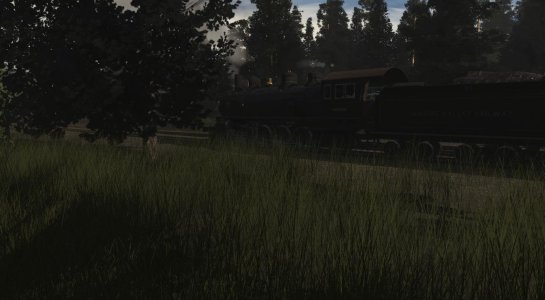Ron, only you can decide which trees and shrubs will be suitable for the route you are building. Presumably, you will not be planting cacti and tropical palms in an alpine environment so that part is usually easy. I suspect that what you are really asking is "Speed Trees vs non Speed Trees" or "high resolution trees vs low resolution".
In my opinion only, the low resolution trees and shrubs, i.e the "billboard" ones that look like two cardboard cut outs stuck together, look terrible and can ruin the whole appearance of a route. In my routes I use Speed Trees almost exclusively. Grasses and a few shrubs are the only non Speed Tree assets that I use. I no longer use splines for plants of any kind (grasses, shrubs, trees).
Your performance concerns are important and there are a number of points that need to be considered.
- The rendering of Speed Trees is done by the GPU which is much better at it than the CPU.
- The rendering of splines is done by the CPU.
- Speed Trees contain LOD data which most older plant assets lack.
There is a persistent claim that Speed Trees come with a performance penalty, I have never found this to be the case. Having said that if you throw a significant number of assets into a scene, particularly where those assets have not been "optimised' (i.e. they were made in SketchUp and/or lack LOD) there will come a point where performance will suffer.
I recently created a layout in a semi desert region that had a high density of low grasses and shrubs with fewer trees. The grasses and most of the shrubs were higher resolution assets but mostly of the older types that lacked any LOD. The final result looked fantastic and superbly matched the photographs I had of the region but the fps dropped to a "stutter". I had to "prune" it right back. My main desktop system has an Nvidia 960 GTX. That is the one thing that you will have no control over - the system configuration of the users who will download your route. I normally place a "high definition assets" warning in the description of my routes.








